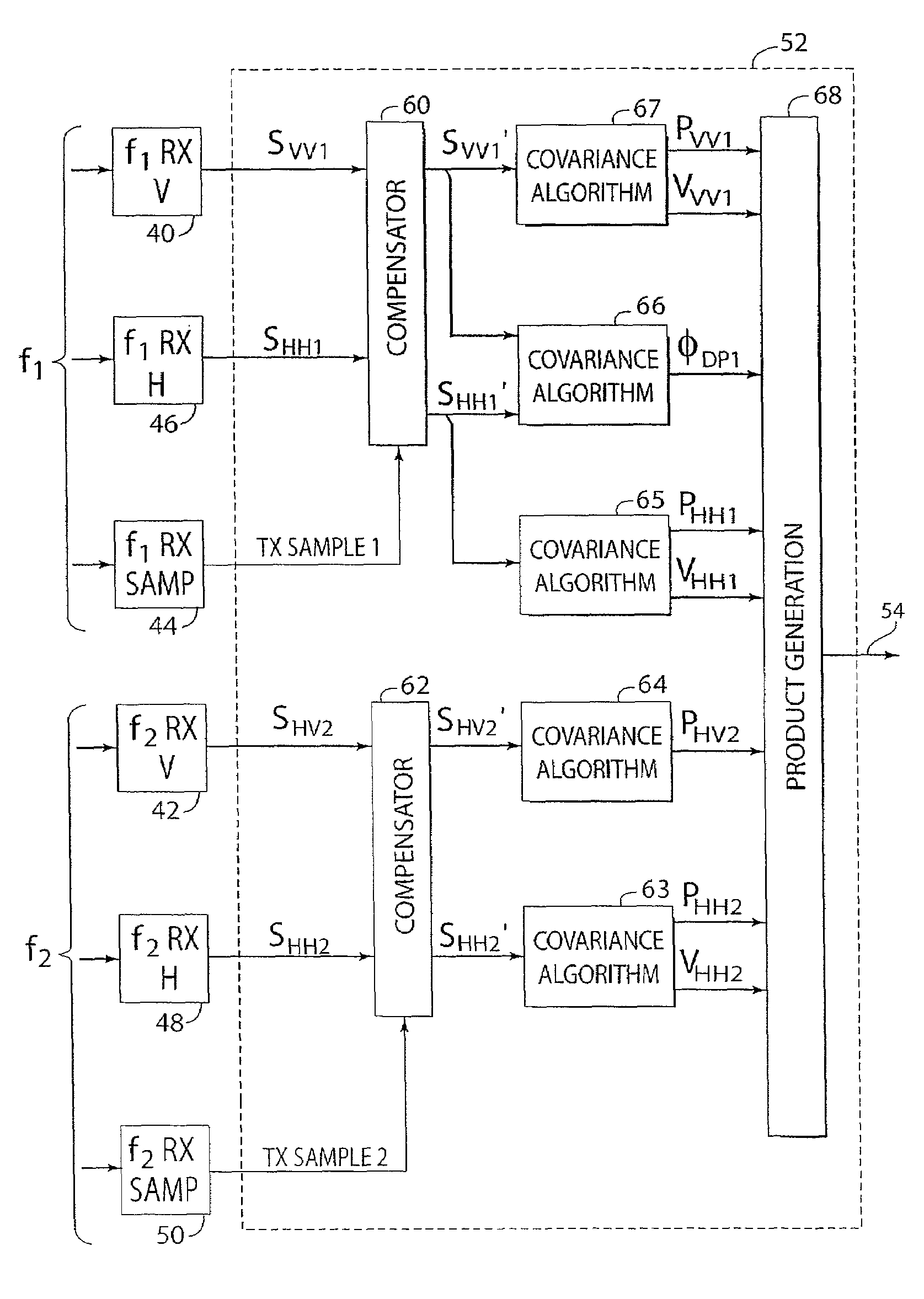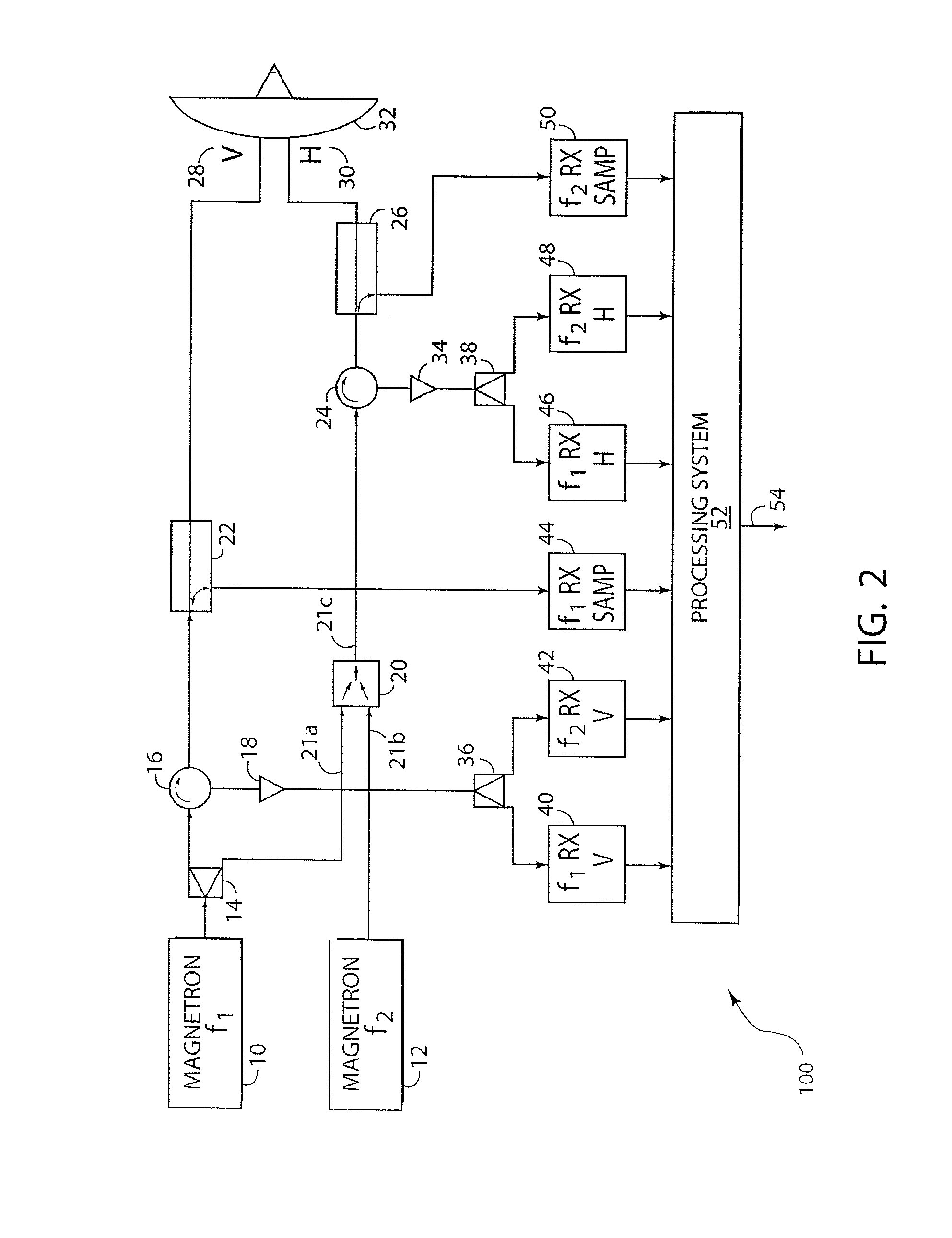Polarization and frequency diverse radar system for complete polarimetric characterization of scatterers with increased scanning speed
a radar system and scanning speed technology, applied in the field of radar systems, can solve the problems of meteorological significance of certain parameters in the scattering matrix that cannot be obtained with this technique, and the measurement of the error rate of the doppler velocity, so as to achieve the effect of maximization isolation
- Summary
- Abstract
- Description
- Claims
- Application Information
AI Technical Summary
Benefits of technology
Problems solved by technology
Method used
Image
Examples
Embodiment Construction
[0025]For purposes of discussion, ground based radars will be assumed in which a gimbaled mount is used to scan a pencil beam antenna 32 in azimuth and elevation as per the general coordinate system 200 shown in FIG. 1. The reference plane 210 is assumed substantially parallel to the local surface of the Earth. The elevation angle 206 defines the pointing direction 202 of antenna 32. Zenith vector 214 is perpendicular to reference plane 210. The projection 216 of pointing direction 202 lying on plane 210 defines the azimuth angle 208 to a northern reference vector 212. An elevation angle of zero degrees is defined to point at the horizon (points lying in plane 210), and an elevation angle of 90 degrees is defined to point to the zenith 214. Azimuth angles 208 are defined about the zenith 214. The zero azimuth reference point is generally aligned to north 212. However, this is only by convention and does not affect the geometry. Radars employing ground-based scanners are introduced h...
PUM
 Login to View More
Login to View More Abstract
Description
Claims
Application Information
 Login to View More
Login to View More - R&D
- Intellectual Property
- Life Sciences
- Materials
- Tech Scout
- Unparalleled Data Quality
- Higher Quality Content
- 60% Fewer Hallucinations
Browse by: Latest US Patents, China's latest patents, Technical Efficacy Thesaurus, Application Domain, Technology Topic, Popular Technical Reports.
© 2025 PatSnap. All rights reserved.Legal|Privacy policy|Modern Slavery Act Transparency Statement|Sitemap|About US| Contact US: help@patsnap.com



